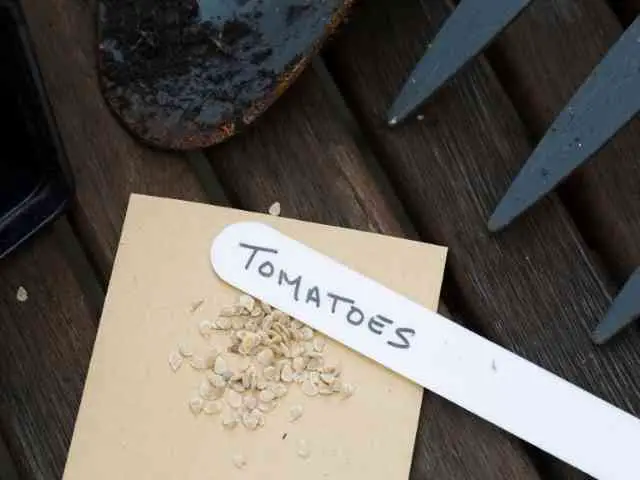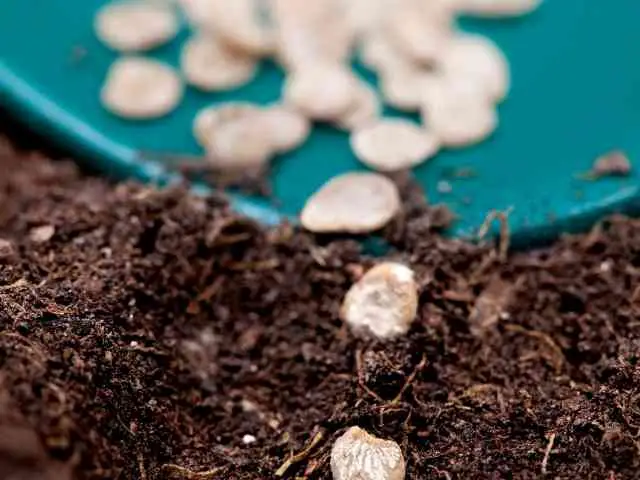Anyone who has composted leftover tomatoes knows what it’s like to have tomato seeds “volunteer” in the garden the following spring when the compost that is overwintered is used as a soil addition or mulch. Tiny tomatoes may come up in the garden where tomatoes fell off the vine from last year. Tiny seeds found in tomato fruits may easily germinate in the soil if they can find their way there. Instead of waiting for unintentional helpers, you can easily store seeds from tomato fruits and plant them when and where you want them to germinate.

The Best Time To Save Tomato Seeds
You may gather seeds from ripe tomatoes from mid-summer through October. Seeds for tomato plants are best started inside as early in the spring as possible since they develop slowly. When planted in the ground, tomato seeds may take six to eight weeks to sprout into viable seedlings, and then they can take up to two months to bear fruit. Small cherry or pear tomatoes, for example, begin producing fruit much more quickly than giant beefsteak tomatoes, which might take up to six months to mature. Nonetheless, in general, tomatoes are somewhat slow-growing produce.
Reader Poll: What online courses would interest you?
Working With Tomato Seeds
Many plants’ seeds may be kept by simply waiting for their seed pods or fruits to dry before opening them up and collecting the seeds that are still within them. To prevent the seeds from sprouting within the tomato, a gel-like bag is placed around the seeds, which is why tomatoes are a little more difficult to grow. This gel coating may be removed by allowing the fruits to decay and ferment. When the fruit ripens and falls to the ground, this occurs naturally. The procedure for seed savers will be expedited.
To begin, pick out the prettiest tomatoes. You want to conserve seed from the best fruit so that the following year’s plant will inherit the best genes possible. Open-pollinated (OP) tomato seeds should only be saved. All of the family treasures are included. Even though hybrid tomato seeds may germinate and develop plants, they generally revert to one of the parent plants, resulting in wildly diverse fruit.

Harvest The Seeds
Slice the fruit in half so that the stem end is on one side and the blossom end is on the other side to begin the procedure. The seed cavities will be more visible this way than if you cut through the stem end.
Subscribe to our newsletter!
Some kinds of pasta and smaller tomatoes have a high concentration of seeds in the cavity, making it possible to scoop them out while still using the tomato’s flesh. When it comes to slicing tomatoes, you’ll need to remove all of the flesh and the seeds. A clean basin or jar is all that is needed, regardless of how many seeds you have.
Start The Fermentation Process
A cup of water may assist to separate seeds from pulp if there is not enough moisture in the tomato pulp. Then place the seeds and pulp in a warm, out-of-the-way location. Allow 2–4 days for the fermentation to take place. As it does so, the combination will begin to smell bad, so place the dish somewhere you won’t regularly pass by.
If you have glass canning jars on hand, you may use them for fermenting tomato seedlings. You can see what’s going on because of the glass sides and the additional space on top, which helps prevent the jar from smelling. To prevent fruit flies from getting inside the jar, you might cover the top with a cheesecloth or paper towel. Each variety should be identified.
Do A Fermentation Checkup
Check on the fermentation process daily. Mold on top of the seeds and pulp is what you’re aiming for at this stage. To determine whether it’s finished, watch for bubbles to form or look for mold to cover the whole tomato pulp layer. To avoid germination, don’t let the seeds ferment beyond this point.
Even though the mold layer is more difficult to see through the glass jar, you can usually tell when the fermentation is complete when the seeds fall to a watery liquid at the bottom of the jar and a thicker pulp and mold sit on top of the seeds.
Clean And Sort The Seeds
Once the mold has been removed, it’s time to get rid of it. Cleaning the seeds without lifting the bag will take longer and be more difficult. Pour some water into the container and give it a good shake. It is easier to remove the bad seeds initially since they will sink to a lower level of the mixture.
Disinfect The Seeds
Rinse the seeds well under running water after straining them out of the mixture. The goal is to have only clean seeds left after removing any pulp fragments and mold that may have formed.
Dry The Seeds
Dry the seeds on a paper plate or a glass dish. To avoid the seeds sticking to the paper or paper towels, don’t use them. Allow the seeds to air dry in a warm, dry place for several days. Ensure that they dry evenly by shaking them on a platter every day to prevent clumping. The seed may be destroyed if you attempt to speed up the process using heat.

Store The Seeds
Storage in an airtight container should be done in a cold, dry area once the seeds dry out. To preserve it, the envelope will be put in the canning jar you see in the photo above. Label and date your seeds to avoid confusion.

Conclusion
A particular advantage of seed preservation with heritage tomato types is that many of them adapt themselves well to the practice. Unfortunately, there are a plethora of historic tomato cultivars in jeopardy. In addition to being uncommon, heirloom tomatoes may be very tasty and may come in a variety of colors and forms.

